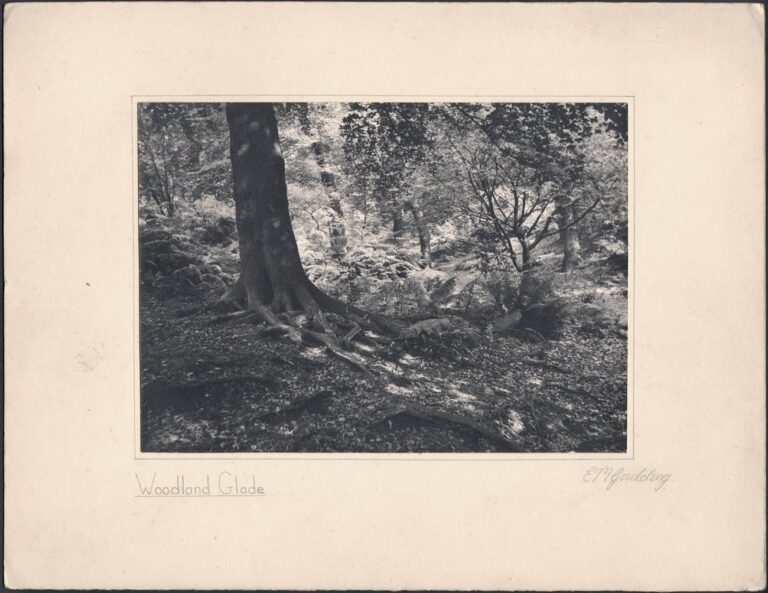
The Irrigation Ditch
A hand-colored pictorial landscape shows an unlikely subject: an irrigation ditch, probably taken by the photographer somewhere in the Central Valley of California in the late 1920’s.
Irrigation canals became more common in this region after 1932 when the California State Water Plan was drawn up by state engineer Edward Hyatt. An excerpt, as outlined in the article The Central Valley Project by author Eric A. Stene:
California’s government became interested in a comprehensive water plan for the state in 1921. The state legislature directed the State Engineer to come up with such a plan. They wanted it to accomplish conservation, flood control, storage, distribution, and uses for all California water. The legislature directed the State Engineer to estimate total costs for the reservoirs, dams, and any other facilities needed to institute the state water plan. The legislature appropriated $200,000 to investigate this state water plan. The legislature received the report in 1923. Further legislation and appropriations raised the bill to one million dollars. Between 1920 and 1932, approximately fourteen reports detailed water flow, drought conditions, flood control, and irrigation issues in California. State Engineer Edward Hyatt used the reports to create the California State Water Plan. (website accessed 2024: The Bureau of Reclamation, a federal agency under the U.S. Department of the Interior)
Simply a hand-colored gelatin silver photograph on matt surface Opal V Eastman Kodak paper favored by photographers such as Yousuf Karsh, a “Pastelograph” was a darkroom process invention of Blumann. So enamored by his creation, several of his finished prints held by grandson Thomas High bear the following printed label:
A PASTELOGRAPH
is a photographic print made on Opal V Paper
(Eastman Kodak Company)
made in the prescribed way and hand-colored with
Nacco Dyes
(Allied Chemical and Dye Corporation)
Processed and heat treated with
Kandar
(Negatauch Chemical)



